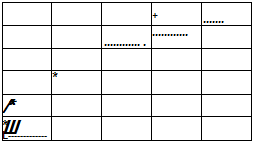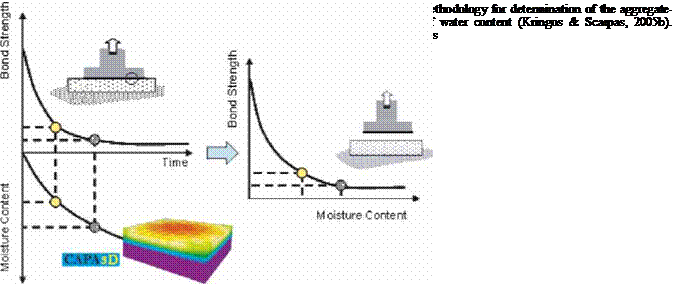The Mechanical Processes Contributing to Water-Induced Damage
Because water-induced damage influences the dry response of the material, the effects of the physical processes must be coupled with a three dimensional elasto- visco-plastic constitutive model for mastic response (Scarpas et al., 2005). Mastic in asphaltic mixtures is known to be a material whose behaviour, depending on strain rate and/or temperature, exhibits response characteristics varying anywhere between the elasto-plastic and the visco-elastic limits. Constitutive models for such types of materials can be developed by combining the features of purely elasto-plastic and purely visco-elastic materials to create a more general category of constitutive models termed elasto-visco-plastic. This is the approach that was adopted by the Delft researchers, but a detailed description of the formulation is beyond the scope of this book but is available (Kringos & Scarpas, 2006) for interested readers.
5.5.3.1 Aggregate-Mastic Bond Strength as a Function of Water Content
Clearly, such modelling requires a knowledge of the aggregate-mastic bond as a function of water content. The direct tension test provides the means of assessing bond strength and to define a relationship between the mastic-aggregate bond strength and the conditioning time in a water-bath test (see Fig. 5.10). When the purpose of the test is to acquire a comparison between particular mastic-stone combinations, results of the pull-off test may directly provide useful information, provided that similar geometries and water conditioning are used. To determine, however, the fundamental relationship of the influence of water on the bond strength, the quantity of water at the interface is of paramount importance. Since this type of information cannot be determined from the test, an additional procedure was developed (Copeland et al., 2007) to relate the bond strength to the quantity of water in the bond. By simulating the test specimens with the RoAM software (see above), the relationship between the quantity of water at the mastic-aggregate interface and the soaking time can be found, Fig. 5.10 (left). By combining the results of finite element simulations and the pull-off test, a relationship between the bond strength and the water content is determined, Fig. 5.10 (right).
From test results, using for the mastic a SHRP core bitumen AAD3 (PG4 58-28) with a diabase filler material passing the < 75 ^ m sieve (#200) and for the aggregate substrate a diabase rock, the tensile bond strength, Smd, as a function of volumetric water content, в, was determined as:
Smd = e(ln S0-aVe) (5.2)

![]()
 |
Fig. 5.11 Aggregate-mastic bond strength as a function of water (adapted from Copeland et al., 2007) [9] [10]
where ln So = 0.30, So being the dry adhesive strength, and a = 3.76. This can be reformulated into a water-induced damage parameter, d:
d (0) = 1 – e-a^ (5.3)
Figure 5.11 shows the result of the experimental-computational procedure and the regression curve, as expressed by Eq. 5.3.






Leave a reply